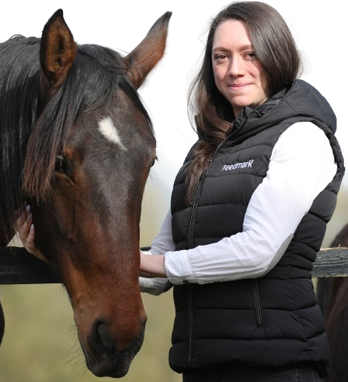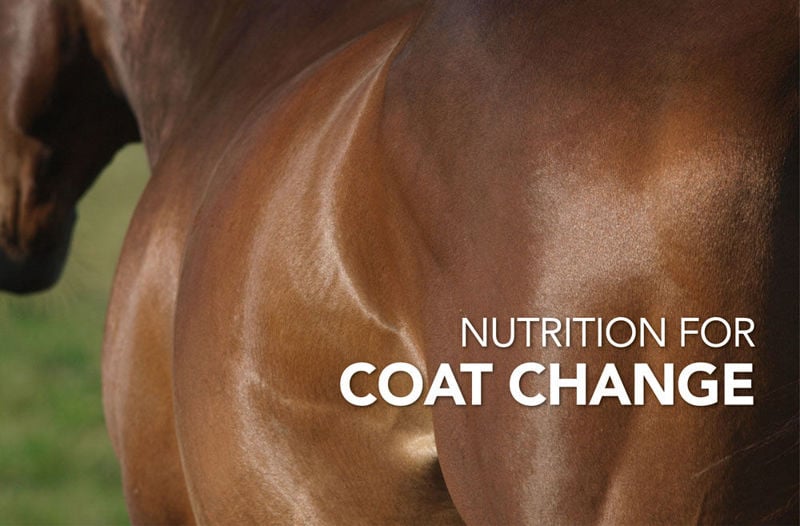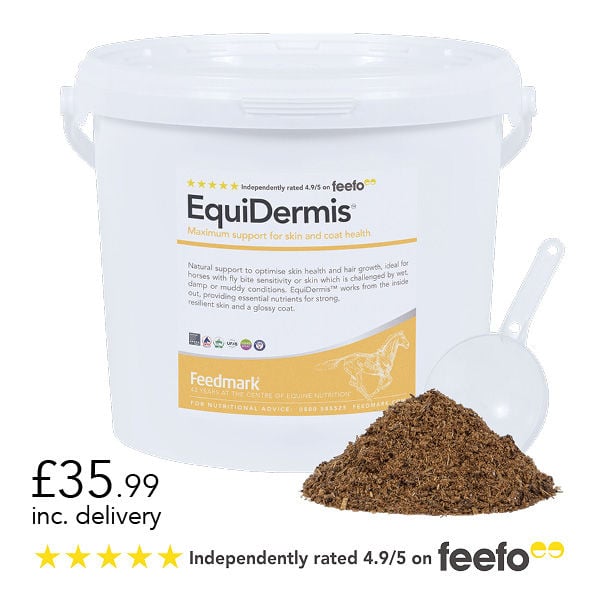Skin and coat health is extremely important and both are used as an indicator of your horse’s overall health status. A bright, shiny coat shows that a horse is well and in good condition whereas a poor, dull coat can be an indicator of underlying health issues that need addressing.
Making up 12 – 24% of your horse’s bodyweight, the skin is the largest organ of your horse’s body. It is the first line of defence against the environment and offers protection against infections, bacteria, and insects. It is sensitive enough to feel the touch of a fly and helps to regulate your horse’s body temperature and maintain hydration.
The skin comprises of three layers; the epidermis, the dermis, and the subcutis.
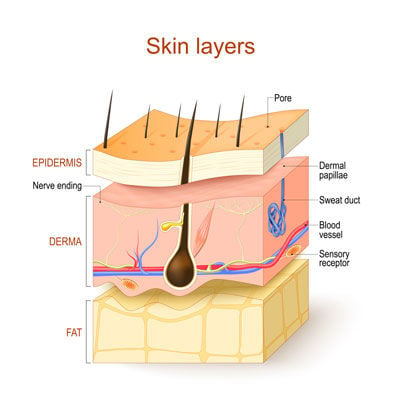
Image: The horse's skin layers
EPIDERMIS
The epidermis is the outer layer of the skin which provides a protective barrier. The main component of the epidermis is keratin which provides a water-resistant barrier to the skin. Epidermal cells are continuously shed and replaced, however factors such as weather, the time of year and the horse’s diet all influence this cycle.
DERMIS
The dermis supports and nourishes the epidermis through blood vessels that are located within the dermis. These blood vessels regulate skin temperature, and the dermis is where sensory nerves and sweat glands are located.
SUBCUTIS
The subcutis is the innermost major layer of the skin and is where subcutaneous fat and muscles are found. The subcutaneous fat is an insulator and acts as a shock absorber.
Your horse’s mane and tail hair are permanent whereas coat hair is temporary - it grows and sheds through stimulation from light. Throughout spring the days lengthen, and your horse is exposed to longer periods of daylight. This increase in sunlight triggers the pineal gland to secrete hormones which promote the production of new coat hair. The pineal gland prompts the pituitary gland to signal the thyroid gland and it is the thyroid gland that is responsible for hair growth and loss.
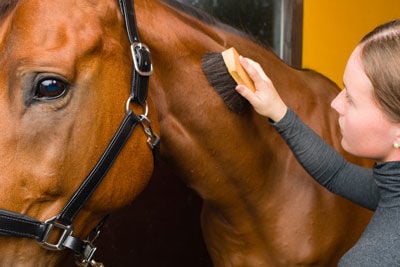
Image: Horse being groomed
Maintaining healthy skin and coat improves your horse’s resistance to parasites, which will look for breaks in the skin to lay eggs or invade the tissues underneath. Immune related cells are also found in the skin and when functioning correctly, they will inhibit growth of disease-causing microorganisms and repel parasites.
There is an increased need for energy and nutrients during a horse’s coat change. Coat change also puts strain on metabolic and immune function therefore supportive supplementary feeding is recommended. A properly balanced diet is important for skin health. Minerals such as Copper and Zinc are required for maintaining the structural integrity of the skin through sustaining and repairing skin cells.
Omega-3 fatty acids help the skin to retain moisture and help to increase skin cell elasticity, reducing damage from itching and irritation, therefore helping to keep the skin and coat in good condition. Horses cannot produce essential fatty acids in the diet, so it is crucial that they are provided.
Amino acids and B vitamins, such a Biotin, are required for keratin production – the primary component of hair which provides the structural integrity and strength of the hair strands. Supplementing with additional amino acids and biotin has been shown to improve the strength and appearance of the horse’s coat.
You can naturally support your horse’s skin and coat condition by feeding EquiDermis™ which works from the inside out, providing essential nutrients for strong, resilient skin and a glossy coat. EquiDermis™ has been specifically formulated to provide natural support to the skin tissue, promoting a shiny, glossy coat and soothing challenged skin. It contains a rich source of alpha-linolenic acid, an essential fatty acid (Omega-3) that has various health benefits which are particularly suited for skin support as well as a proprietary blend of herbs that are known to support skin and coat health. Find out more about Equidermis™ here >>
Feed EquiDermis™ to:
- Promote healthy skin and coat.
- Those exposed to wet or muddy conditions.
- Soothe dry, scurfy skin.
- Add a healthy, glossy sheen to any coat.
